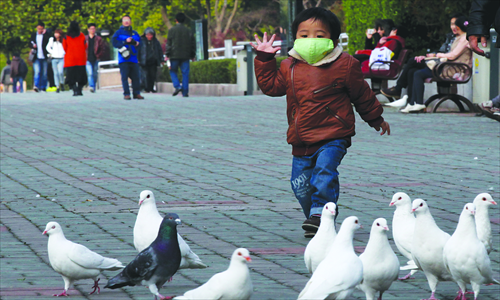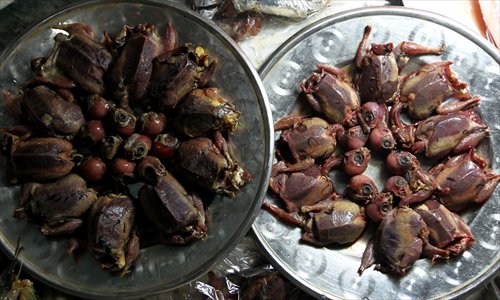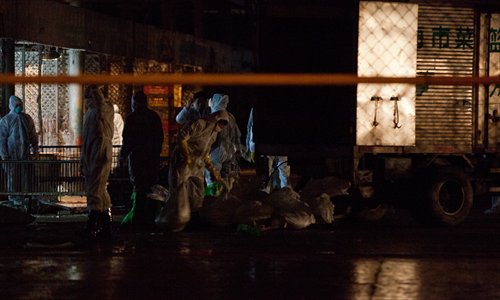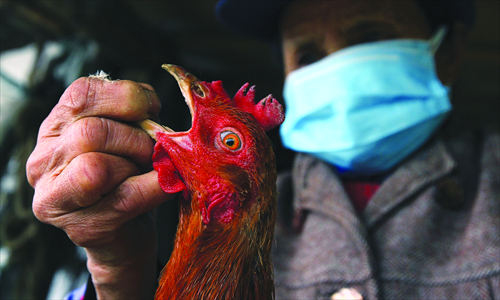Cooped up with death




The death total from H7N9 bird flu has reached six, following the first death on March 4 in Shanghai. But in some places, people's awareness of the virus is still weak.
Many birds have been killed in Shanghai, and the trade of live poultry has been suspended. Similar measures have been taken in other areas where H7N9 is found. As of April 7, 21 cases of H7N9 bird flu have been reported, including six deaths. Shanghai tops the list with 10 cases, including four deaths, among the infected regions, followed by Jiangsu, Zhejiang and Anhui provinces.
Though Shanghai has a licensing system for the sale of live birds, there are still loopholes that allow for unlicensed butchers to operate. Some vendors' stands still carry live chickens, killed on the spot. Under these conditions, the virus could spread from bird to human, as Jiang Qingwu, dean of the School of Public Health at Fudan University, told a forum on April 6.
Jiang's worries were verified by the Global Times. Sparrow meat is still being sold in a diner in Nanqiao town of Fengxian district, a suburb of Shanghai. The business is good and the meat sells out every day. The diner has no refrigerated sparrow meat, and all the flesh is fresh.
Chicken, duck or pigeon meat can no longer be found there since supply from legal channels has been suspended. But for sparrows the diner hires people to shoot the birds at night and serves customers the next day.
This kind of restaurant is not uncommon in suburban areas of Shanghai, and people there have a weak awareness of the danger of bird flu, the Global Times investigation found. Meanwhile, in suburban areas, many birds are raised under poor conditions, but the people who raise them for food, rather than sale, don't see any problems.
Because of the high price of both chicken and eggs, suburban residents often buy immature hens from the market, then raise them for six months before slaughtering them for food. These small hatcheries usually have less than a dozen birds.
Local government regulations stipulate that masks should be worn to feed chickens, but dealing with the birds is up to the families themselves, as they operate in tiny numbers compared to real farms.
But bird flu has become a regular experience for these small-scale raisers, arriving every two or three years, particularly in long-used coops. Chickens die, the coop is disinfected with lime or bleach, and then more chickens are raised.
It is vital to kill live poultry to prevent H7N9 from mutating, as the virus duplicates rapidly, and spreads easily, said Michael Klag, dean with School of Public Health at Johns Hopkins University, according to Labor Daily.
"The population is growing, and people have a higher demand for poultry than before. Nowadays most chicken ranches are densely populated, which means the virus can spread very quickly once a chicken is infected," said Jiang, in response to public concerns about the rapid spread of bird flu in recent years.